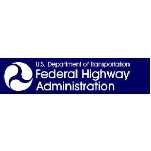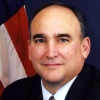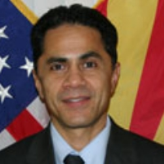Part of the Department of Transportation, the Federal Highway Administration (FHWA) helps maintain the nation’s system of interstate highways. Responsibility for building and maintaining highways is the charge of state and local governments, but the FHWA provides enormous support in the form of funding. Using monies collected from fuel and motor vehicle excise taxes, FHWA disperses federal highway funds to cities, counties, state agencies and tribal governments through two programs: Federal-aid Highway Program (to state and local governments); and Federal Lands Highways Program (for roads in national parks, national forests, Indian lands and other land under federal stewardship). The agency also establishes rules for building safe roads, overpasses and bridges that governments and contractors must follow.
Two months later MacDonald submitted Proposed Direct Route Highways to the White House. BPR found that “a national system of direct route highways designed for continuous flow of motor traffic, with all cross traffic on separated grades, is seriously needed and should be undertaken.” Meanwhile, members of Congress heard about BPR’s report and decided to seek their own study. The Federal-Aid Highway Act of 1938 asked BPR to submit a report on a toll network involving three east-west and three north-south “superhighways.” Toll Roads and Free Roads would be an extensive study based on data from traffic surveys around the country. The report rejected the idea of a toll network, but proposed “a special, tentatively defined system of direct interregional highways, with all necessary connections through and around cities, designed to meet the requirements of the national defense in time of war and the needs of a growing peacetime traffic of longer range.”
Even with a new leader and funding, BPR encountered numerous obstacles as it first began to build highways. Engineers and steel were in short supply; local communities complained if a new highway threatened to bypass them, threatening their economic livelihood; land speculators in some locations bought up land in interstate corridors and resold it to states at ridiculously high prices; and urban stretches of new highway were expected to eat up a much larger portion of the federal highway budget than was originally expected.
(by Richard F. Weingroff, Public Roads)
The Federal Highway Administration (FHWA) is charged with supporting the efforts of state, local and tribal governments to construct, improve and preserve America’s highway system. Funded by fuel and motor vehicle excise taxes, FHWA disperses federal highway funds to these governments through two programs: the Federal-aid Highway Program (to state and local governments); and the Federal Lands Highways Program (for national parks, national forests, Indian lands and other land under federal stewardship).
The Federal Highway Administration distributes billions of dollars in federal grants each year to state, local and tribal governments to support highway efforts. These grants are separated into numerous categories including:
- Bridge Technology
- Corridor Planning and Development and Border Infrastructure (Corridors & Borders)
- Ferry Boats
- Highways for LIFE
- Interstate Maintenance
- Innovative Bridge Research and Construction
- Innovative Bridge Research and Deployment Program
- ITS Deployment Program
- National Historic Covered Bridge Program
- Public Lands Highways
- Scenic Byways
- Transportation and Community and System Preservation Program
- Transportation Infrastructure Finance and Innovation Act (TIFIA)
- Truck Parking
- Value Pricing Pilot Program
|
Phoenix Marine Co.
|
$419,986,000
|
|
Indus Corporation
|
$172,620,424
|
|
Obayashi Corporation
|
$113,994,156
|
|
H-K Contractors
|
$100,846,297
|
|
Noblis, Inc.
|
$89,686,221
|
|
Goodfellow Bros., Inc.
|
$78,828,712
|
|
Battelle Memorial Institute
|
$68,221,708
|
|
Peter Kiewit Sons', Inc.
|
$58,359,830
|
|
SAIC, Inc.
|
$54,736,346
|
|
Southeast Road Builders, Inc.
|
$54,421,756
|
(Transportation Alternatives)
FHWA 2006 Status of the Nation’s Highways, Bridges and Transit: A View to the Future
- Table of Contents
- Overview
- History
- What it Does
- Where Does the Money Go
- Controversies
- Suggested Reforms
- Comments
- Leave a comment


On May 8, 2015, President Barack Obama announced his intention to nominate Gregory G. Nadeau, the current deputy administrator of the Federal Highway Administration to be the Administrator of that agency.
Nadeau is from Lewiston, Maine, graduating from Lewiston High School in 1973. He attended the University of Maine and worked at Friend’s Deli, which was owned by his parents.
Nadeau was elected to the Maine House of Representatives in 1978 and was the youngest member of that body when he began serving there at age 23. He continued to work in the family business, sold real estate and worked on political campaigns. In 1979, he became assistant to the state coordinator for the Carter-Mondale re-election effort and in 1982 worked on the re-election campaign of Maine Governor Joseph Brennan. He also served as special assistant to Lewiston Mayor Paul Dionne.
Nadeau left office in 1990 and was president of Public Policy Associates, a lobbying firm he founded with another former state legislator.
Nadeau moved back into state government in 1993 as the policy advisor to the office of the president of the Maine senate. In 1995 he moved to the office of Governor Angus King (now a U.S. senator) as senior policy advisor for issues including transportation and economic development. Nadeau joined the Maine Department of Transportation in 2002 as director of policy and communications and in 2004 was named deputy commissioner for policy, planning and communications and served on the Maine Turnpike Authority Board of Directors.
Nadeau was named deputy administrator at the Federal Highway Administration in July 2009.
Nadeau and his wife, Diane, who married in 1982, have two children. Nadeau’s brother, Phil Nadeau, is the deputy city administrator of Lewiston, Maine.
-Steve Straehley
To Learn More:
Testimony before Senate Committee on Environment and Public Works (pdf)

Running the state of Arizona’s transportation agency has become something of a stepping-stone for recent appointees to the Federal Highway Administration (FHWA). At the beginning of George W. Bush’s first term, Mary Peters, then-director of the Arizona Department of Transportation (ADOT), was chosen to run FHA (and later became Secretary of Transportation under Bush). And now President Barack Obama has looked to Arizona for his own FHWA administrator, Victor M. Mendez.
In 2007 Mendez served as president of the American Association of State Highway and Transportation Officials. In his earlier activities for the organization, he served as chair of the Standing Committee on Research, chair of the Operations Council of the Standing Committee on Highways, and chair of the Transportation Research Board/National Cooperative Highway Research Program oversight group for the Long-Term Pavement Performance 20-year program.
- Latest News
- D.C. Public Schools will Teach all Second-Graders to Ride a Bike
- New Rule in Germany Limits Sales of Sex-Themed E-Books to 10pm to 6am
- What Happened to the 6-Year-Old Tibetan Boy the Chinese Government Kidnapped 20 Years Ago?
- U.S. Ambassador to Turkey Photoshops his Hair Color to Mock Turkish Mayor
- Mystery Artist Calls Attention to Unfixed Potholes by Drawing Penises around Them
Part of the Department of Transportation, the Federal Highway Administration (FHWA) helps maintain the nation’s system of interstate highways. Responsibility for building and maintaining highways is the charge of state and local governments, but the FHWA provides enormous support in the form of funding. Using monies collected from fuel and motor vehicle excise taxes, FHWA disperses federal highway funds to cities, counties, state agencies and tribal governments through two programs: Federal-aid Highway Program (to state and local governments); and Federal Lands Highways Program (for roads in national parks, national forests, Indian lands and other land under federal stewardship). The agency also establishes rules for building safe roads, overpasses and bridges that governments and contractors must follow.
Two months later MacDonald submitted Proposed Direct Route Highways to the White House. BPR found that “a national system of direct route highways designed for continuous flow of motor traffic, with all cross traffic on separated grades, is seriously needed and should be undertaken.” Meanwhile, members of Congress heard about BPR’s report and decided to seek their own study. The Federal-Aid Highway Act of 1938 asked BPR to submit a report on a toll network involving three east-west and three north-south “superhighways.” Toll Roads and Free Roads would be an extensive study based on data from traffic surveys around the country. The report rejected the idea of a toll network, but proposed “a special, tentatively defined system of direct interregional highways, with all necessary connections through and around cities, designed to meet the requirements of the national defense in time of war and the needs of a growing peacetime traffic of longer range.”
Even with a new leader and funding, BPR encountered numerous obstacles as it first began to build highways. Engineers and steel were in short supply; local communities complained if a new highway threatened to bypass them, threatening their economic livelihood; land speculators in some locations bought up land in interstate corridors and resold it to states at ridiculously high prices; and urban stretches of new highway were expected to eat up a much larger portion of the federal highway budget than was originally expected.
(by Richard F. Weingroff, Public Roads)
The Federal Highway Administration (FHWA) is charged with supporting the efforts of state, local and tribal governments to construct, improve and preserve America’s highway system. Funded by fuel and motor vehicle excise taxes, FHWA disperses federal highway funds to these governments through two programs: the Federal-aid Highway Program (to state and local governments); and the Federal Lands Highways Program (for national parks, national forests, Indian lands and other land under federal stewardship).
The Federal Highway Administration distributes billions of dollars in federal grants each year to state, local and tribal governments to support highway efforts. These grants are separated into numerous categories including:
- Bridge Technology
- Corridor Planning and Development and Border Infrastructure (Corridors & Borders)
- Ferry Boats
- Highways for LIFE
- Interstate Maintenance
- Innovative Bridge Research and Construction
- Innovative Bridge Research and Deployment Program
- ITS Deployment Program
- National Historic Covered Bridge Program
- Public Lands Highways
- Scenic Byways
- Transportation and Community and System Preservation Program
- Transportation Infrastructure Finance and Innovation Act (TIFIA)
- Truck Parking
- Value Pricing Pilot Program
|
Phoenix Marine Co.
|
$419,986,000
|
|
Indus Corporation
|
$172,620,424
|
|
Obayashi Corporation
|
$113,994,156
|
|
H-K Contractors
|
$100,846,297
|
|
Noblis, Inc.
|
$89,686,221
|
|
Goodfellow Bros., Inc.
|
$78,828,712
|
|
Battelle Memorial Institute
|
$68,221,708
|
|
Peter Kiewit Sons', Inc.
|
$58,359,830
|
|
SAIC, Inc.
|
$54,736,346
|
|
Southeast Road Builders, Inc.
|
$54,421,756
|
(Transportation Alternatives)
FHWA 2006 Status of the Nation’s Highways, Bridges and Transit: A View to the Future
Comments


On May 8, 2015, President Barack Obama announced his intention to nominate Gregory G. Nadeau, the current deputy administrator of the Federal Highway Administration to be the Administrator of that agency.
Nadeau is from Lewiston, Maine, graduating from Lewiston High School in 1973. He attended the University of Maine and worked at Friend’s Deli, which was owned by his parents.
Nadeau was elected to the Maine House of Representatives in 1978 and was the youngest member of that body when he began serving there at age 23. He continued to work in the family business, sold real estate and worked on political campaigns. In 1979, he became assistant to the state coordinator for the Carter-Mondale re-election effort and in 1982 worked on the re-election campaign of Maine Governor Joseph Brennan. He also served as special assistant to Lewiston Mayor Paul Dionne.
Nadeau left office in 1990 and was president of Public Policy Associates, a lobbying firm he founded with another former state legislator.
Nadeau moved back into state government in 1993 as the policy advisor to the office of the president of the Maine senate. In 1995 he moved to the office of Governor Angus King (now a U.S. senator) as senior policy advisor for issues including transportation and economic development. Nadeau joined the Maine Department of Transportation in 2002 as director of policy and communications and in 2004 was named deputy commissioner for policy, planning and communications and served on the Maine Turnpike Authority Board of Directors.
Nadeau was named deputy administrator at the Federal Highway Administration in July 2009.
Nadeau and his wife, Diane, who married in 1982, have two children. Nadeau’s brother, Phil Nadeau, is the deputy city administrator of Lewiston, Maine.
-Steve Straehley
To Learn More:
Testimony before Senate Committee on Environment and Public Works (pdf)

Running the state of Arizona’s transportation agency has become something of a stepping-stone for recent appointees to the Federal Highway Administration (FHWA). At the beginning of George W. Bush’s first term, Mary Peters, then-director of the Arizona Department of Transportation (ADOT), was chosen to run FHA (and later became Secretary of Transportation under Bush). And now President Barack Obama has looked to Arizona for his own FHWA administrator, Victor M. Mendez.
In 2007 Mendez served as president of the American Association of State Highway and Transportation Officials. In his earlier activities for the organization, he served as chair of the Standing Committee on Research, chair of the Operations Council of the Standing Committee on Highways, and chair of the Transportation Research Board/National Cooperative Highway Research Program oversight group for the Long-Term Pavement Performance 20-year program.
- Latest News
- D.C. Public Schools will Teach all Second-Graders to Ride a Bike
- New Rule in Germany Limits Sales of Sex-Themed E-Books to 10pm to 6am
- What Happened to the 6-Year-Old Tibetan Boy the Chinese Government Kidnapped 20 Years Ago?
- U.S. Ambassador to Turkey Photoshops his Hair Color to Mock Turkish Mayor
- Mystery Artist Calls Attention to Unfixed Potholes by Drawing Penises around Them





Comments